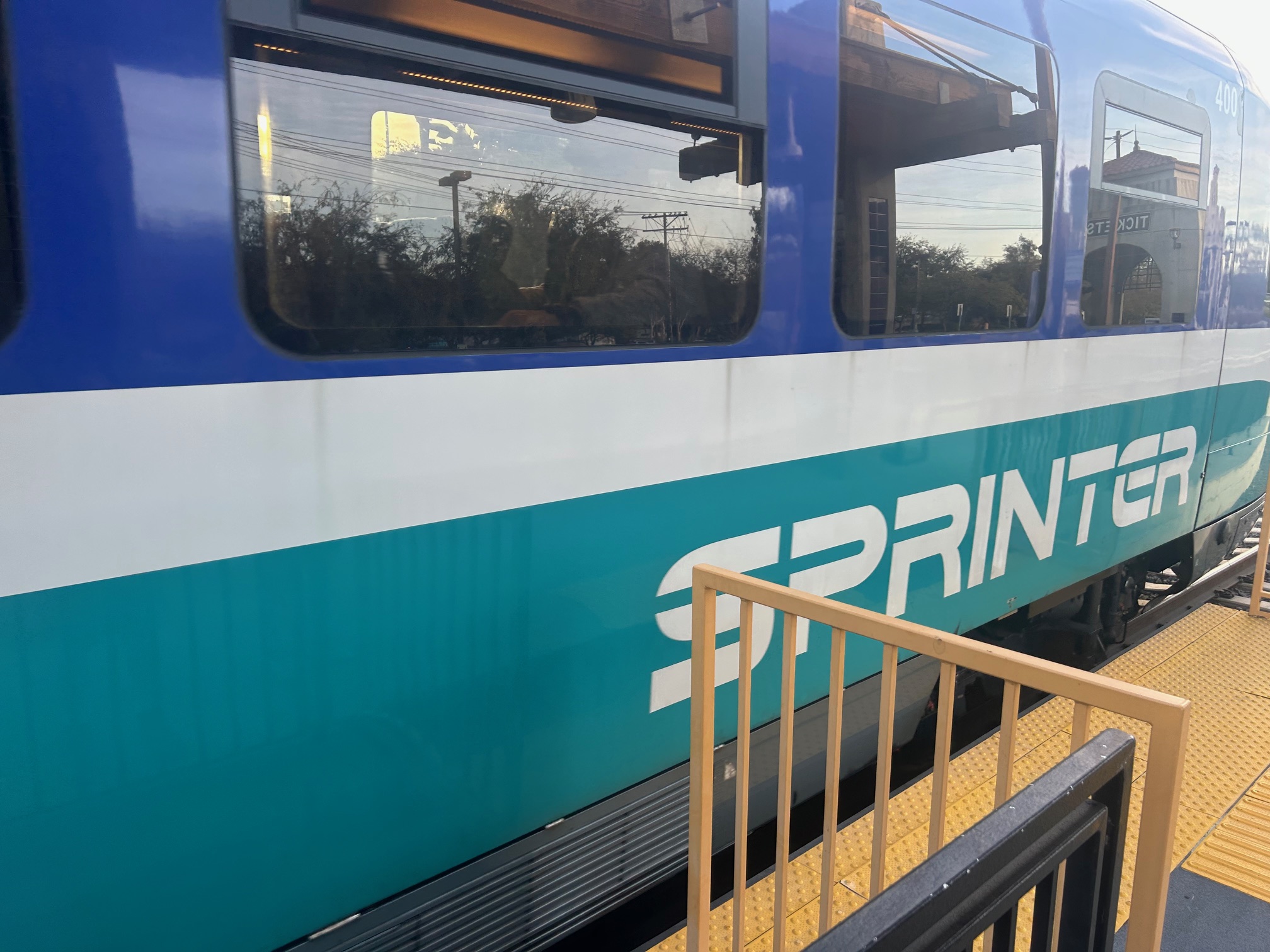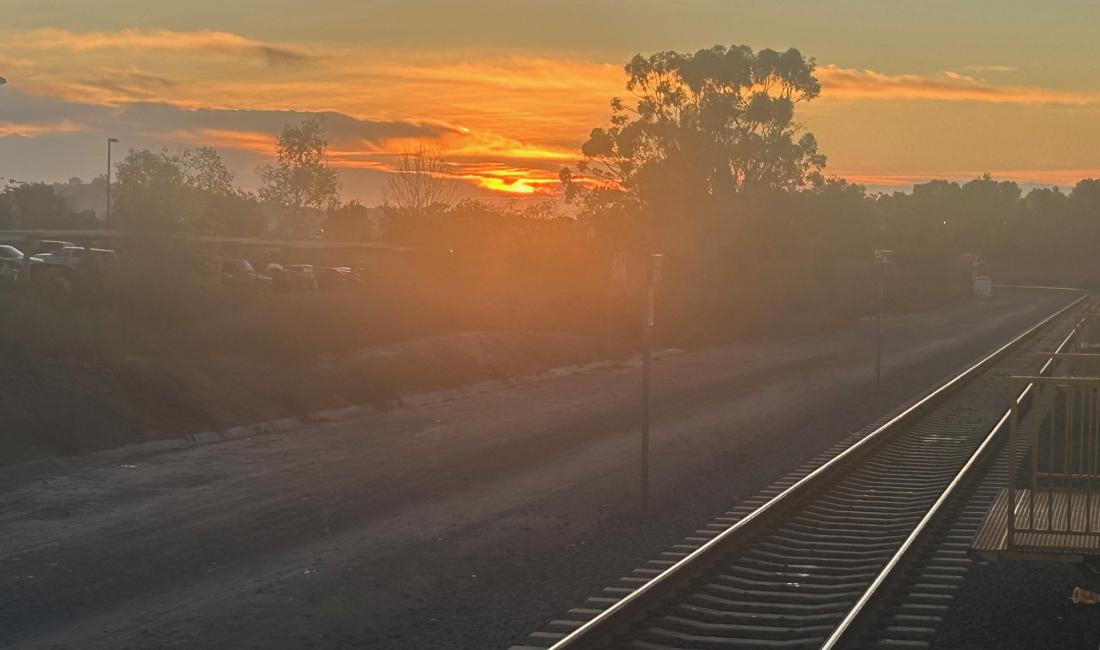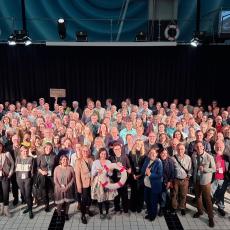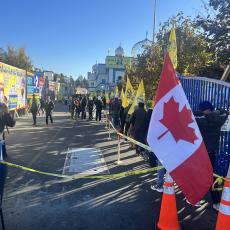Riding across North County San Diego, squinting into the future.
As the late afternoon train took me west across San Diego’s North County, winds from the Pacific slowly gained strength, whistling as they hit the side of the front car.
Through the large windows, the tracks grew so bright in the setting sun that I had to squint whenever I looked ahead.
Californians with the bad luck to live far from San Diego may never have heard of Sprinter rail. It’s their loss. And not just because of the gentle, picturesque ride it offers on its 22-mile route through the canyons of the Highway 78 corridor, from the mesas of Escondido to the Oceanside coast.
But rather because Sprinter, operated by the North County Transit District, is a rare source of transportation inspiration during a time of pitch-black pessimism.
California’s 200-plus transit agencies are often said to be in a “death spiral,” suffering from diminished ridership, faltering revenues, service cuts, and public perceptions that their trains and buses are dangerous and dirty.
Sprinter suggests that our transit future might be brighter.
In an ugly world, Sprinter is reliably pleasant. Its two-car trains, painted green and blue and white like a wave, are striking on the outside and clean on the inside (at least by the standards of your columnist, a frequent rider of L.A.’s filthy Metro trains and buses).
More important, Sprinter has shown itself to be viable public transportation model for a state where growth is stronger far from big city centers. Since Sprinter opened in 2008, it’s inspired extensive transit-oriented development around its 15 stations. And plans are in place to increase service, including building double tracks to allow trains to run every 15 minutes instead of every half-hour.
Expansion plans are responsive to the growth of Sprinter’s ridership—up 8 percent last year, to 1.8 million annual boardings.
Indeed, the biggest threat to Sprinter is that its diesel trains are worn down from so much use that they need to be replaced a decade ahead of schedule, at an estimated cost of $350 million. It’s unclear whether state and federal moneys will be enough to cover that expense.
Fortunately, North County—the stretch of San Diego County from Carmel Valley to the Orange County border—has the people and prosperity to support Sprinter.
North County encompasses nine municipalities and other large unincorporated communities, like Fallbrook and Rancho Santa Fe. Taken together, it feels like its own distinct urban area—a second metropolis for San Diego. With a population of 1.22 million and growing, North County could one day have more people than the city of San Diego, population 1.4 million.
Sprinter ably serves North County people who can live their lives and access their needs without going into downtown San Diego. Capable of connecting people and places far from a single hub, Sprinter may represent the future of rail transit for an increasingly decentralized California.
Around California, subway systems that bring people into and out of a city center—like BART or L.A.’s Metro rail—are still struggling, as people continue to work from home instead of commuting into downtown offices. But commuter rail, connecting suburbs to exurbs, is flourishing.
In the North Bay counties of Sonoma and Marin, the SMART train surpassed pre-pandemic numbers back in 2023 and has been adding riders, services, and connections. SMART is also opening new stations and a new line extension from the Santa Rosa airport to the town of Windsor later this year.
Further south in the Bay Area, Caltrain, the state’s oldest continuously operated railroad, is hotter than any start-up. It has seen a surge in ridership, by 500,000 riders or 41 percent annually, since launching electric trains last fall. Caltrain does go to San Francisco but also connects Silicon Valley communities as well as points south, all the way to Gilroy.
In Southern California, Metrolink, a commuter rail system connecting six counties, has increased service by 23 percent in hopes of winning over customers. There’s also a small but promising Arrow Express Service train, which for now connects the Metrolink station in San Bernardino with the University of Redlands. The ride is only 22 minutes, but, by your columnist’s lights, Arrow seems ripe for extension, perhaps east into Palm Springs, or north up into the high desert.
For these and other projects that connect places on the edges of regions, Sprinter ought to be a model.
The North County Transit District also operates the Coaster commuter rail, which goes from Oceanside into downtown San Diego. But Sprinter’s ridership is twice that of the Coaster because it connects so many different destinations.
I experienced this firsthand on board. From Riverside, I took a shuttle bus service connecting Las Vegas with Tijuana and points in between, to the Sprinter’s eastern terminus at Escondido. If I had been coming from the south, I could have taken a San Diego MTS Express bus to the station.
I was delighted to see that my Pronto card, which lets me ride the San Diego Trolley and buses, also let me pay the $2.50 fare on Sprinter. Each train had one operator; when ours asked for our tickets, one rider confessed to not having bought one, and was politely asked to make sure he bought one next time.
The riders filled every seat. They were a mix of workers on their phones and students doing their homework. Sprinter stops at Palomar College and California State University San Marcos, and near a couple high schools. New and under-construction housing was visible throughout the route. Each train stop was closely connected to a stop on BREEZE, the North County bus service.
I myself made one stop on the train—at the Vista Transit Center, where I bought some lunch and walked to Vista’s city hall, before reboarding to continue my trip.
A number of riders exited the train at Rancho del Oro station, so they could walk to Oceanside new FrontWave Arena, home to minor league basketball’s San Diego Clippers and other events. The transit district has added service to accommodate fans going to the arena.
As we approached the end of the 53-minute ride at Oceanside Transit Center, I enjoyed views of the sea, glistening in the orange light of the dusk, and an overwhelming choice of connections: Coaster, BREEZE, Metrolink to L.A. or the Inland Empire, Riverside Transit Buses, or Amtrak.
After a short walk along Pacific Street to the Oceanside city beach and pier, I considered my options—and happily boarded Sprinter for the return trip to Escondido.





